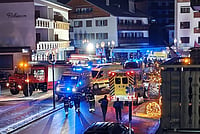Between April 1 and July 27, 45 demolition drives were carried out in Delhi. During a Parliamentary session in July, Kaushal Kishore, the junior minister for housing and urban affairs said that the demolition drives were meant to reclaim nearly 230 acres of government land. He denied the demolition of “any house” during this time. On the contrary, media reports since January, early this year, have extensively highlighted as to what extent the people’s lives have been affected due to the beautification drive, carried out by the Centre and DDA, ahead of the G20 summit. A report by Down To Earth states that almost 3 lakh people staying in Delhi have been uprooted from their homes during the demolition drives.
As Delhi gears up to host more than 20 leaders from across the globe from September 9-10, at the Pragati Maidan, thousands of homes and slums have been razed to the ground ever since India assumed the G20 presidency in December last year. Several locations including Jahangirpuri, Tughlakabad, Bela Estate, Pragati Maidan, Kashmere Gate, Dhaula Kuan, and more, have witnessed demolition drives in slum areas.
In January, when Outlook visited a few of these areas including Bela Estate, Qudsia Ghat, and Nigambodh Ghat, all we witnessed were broken bamboo, thatch roofs, and remains of eight rain baseras (night shelters) that housed around 5,000 people who are daily wage earners or do other odd jobs like of ragpickers, cleaning etc. These shelters provided them with a sense of home. People, with physical immobility, lay on the ground on a makeshift bed under trees.
In February, Delhi Lieutenant Governor VK Saxena held a high-level meeting to review progress on the G20 makeover. He also visited various sites in the city and instructed officials to speed up the work.
“Why else would the authorities break homes they built by spending nearly Rs 16 crores of money?” Sunil Aledia, who runs the Centre For Holistic Development, told Outlook.
That was one of the earlier demolitions ahead of the summit. As time passed, more and more bulldozers reached thousands of houses in other slums.
In April, close to 1,000 homes were razed in Tughlakabad claiming that the land belonged to the Archaeological Survey of India. As per the report of the public hearing, Tughlakabad demolitions "left more than 2,50,000 men, women and children displaced." In Moolchand Basti, close to 600 homes were razed. A similar situation was observed in Mehrauli, Yamuna flood plains, and other places in and around Delh-NCR.
Further, there has been no rehabilitation for those who were rendered homeless and notices were slapped in the shortest of periods, with no due regard to the legal procedure. However, the court cannot give protection until the clusters are surveyed by the Delhi Urban Shelter Improvement Board (DUSIB) and declared as “notified clusters”; and if it's not notified, the court refuses to give protection. And since they refuse to give protection, there’s no rehabilitation.
“As per the policy, DUISIB is supposed to give protection to all settlements and survey them first. But what we see is a violation of the policy,” says a land rights activist, who opines that the ownership of public land, by virtue, lies on the public and the state and “nobody is encroaching”.
Abdul Shakeel of the Basti Suraksha Manch (Save Colony Forum), in an interview to Al Jazeera, said, “In the name of beautification, the urban poor’s lives are destroyed.” In a city of more than 20 million people, the 2011 census put the number of homeless people at 47,000, but activists say that was a vast underestimate and the real number is at least 150,000, according to the report.
Those homeless were touted as “illegal encroachers”, whereas all these people have required documents like Aadhar Card, registered meters, voter ID cards etc, all valid to register themselves as a voter. And even cast votes.
In an earlier interview with Outlook India, one resident broke down showing the remains of his freshly-razed home. “They treat us worse than terrorists. Even terrorists are given the bare minimum time to express their last wish. And look at us, almost every day since March 28, we are being threatened to leave or they will destroy all that we have,” he said while mounting his belongings on a truck and sending them to a faraway village before his family loses everything.
A document titled Public Hearing on The Forced Evictions Across India and G20 Events, which was released on July 13, 2023, states that the government was extremely negligent in their brutal act of demolishing houses of the poor ahead of the G20 summit, according to a report by Down To Earth.
Further, people living under flyovers along the route from the airport to where the summit would be hosted have been asked to vacate, while green sheets have been put up to cover several jhuggis and small shops.
It is interesting to observe that how the entire act of displacement becomes political involving the complexity of class and caste. While they migrate from one place to the other, to eke out a living, homelessness pushes them somewhere else. And this cycle continues, adding to the intergenerational poverty where the dream of 'Jaha Jhuggi Waha Makkan', remains a distant dream. Can any amount of beautification hide the poor or poverty in India’s heartland?


























